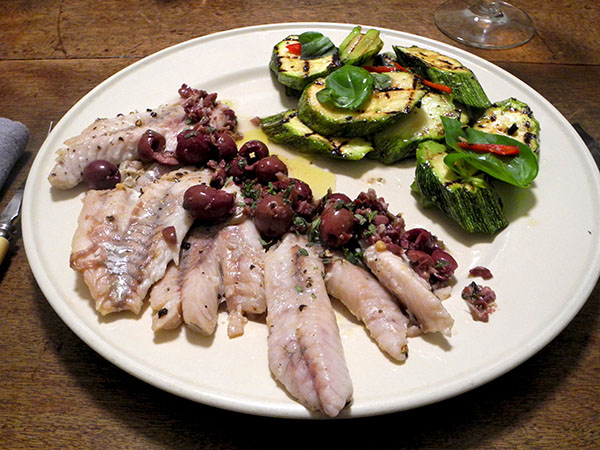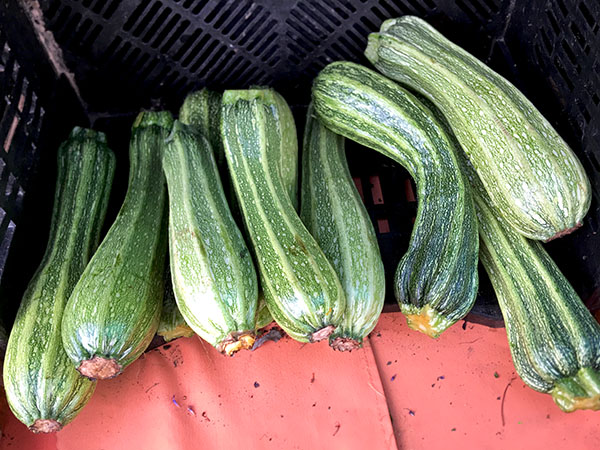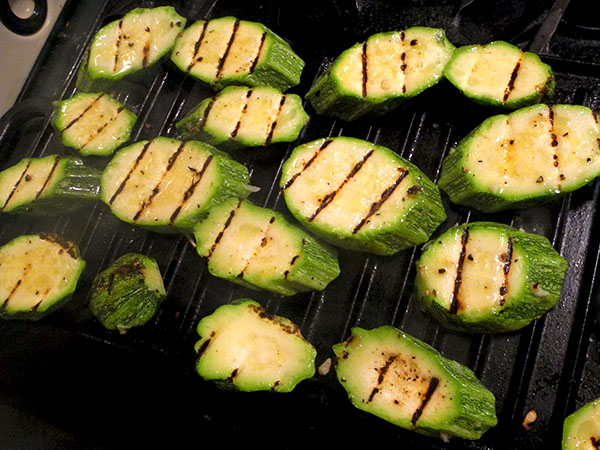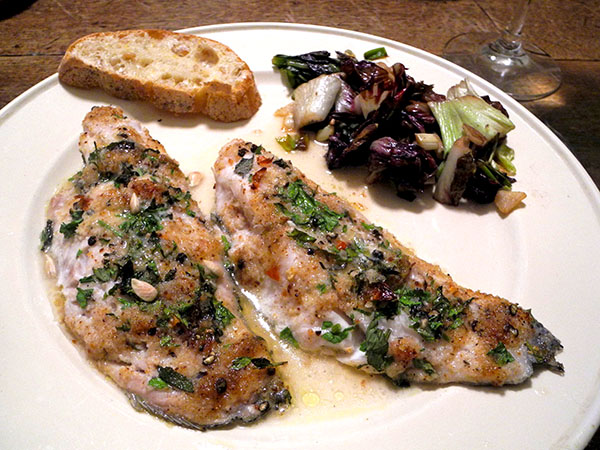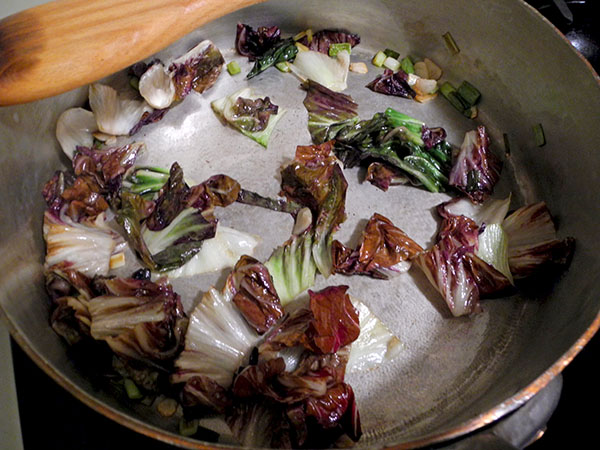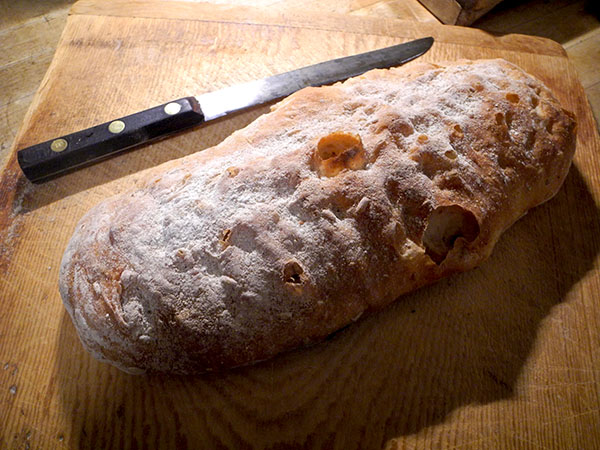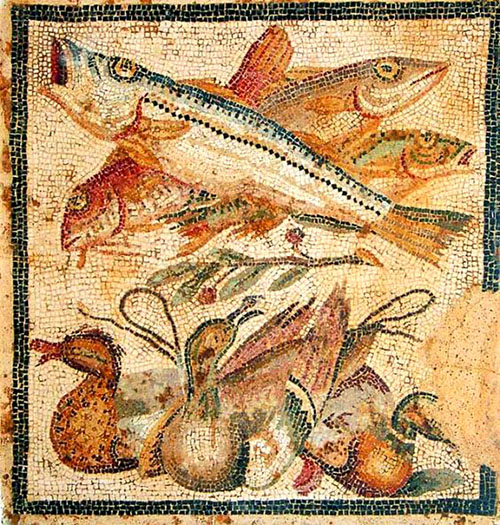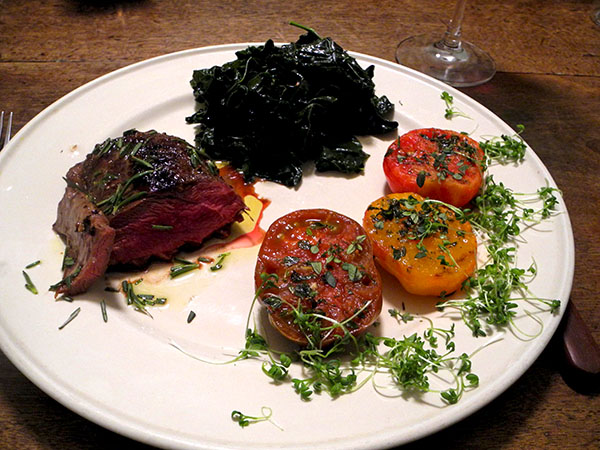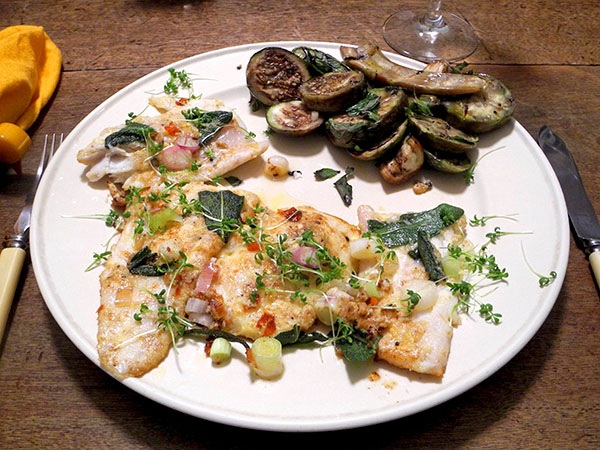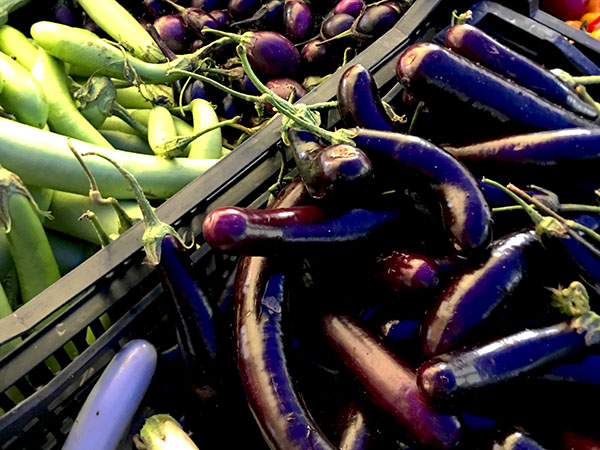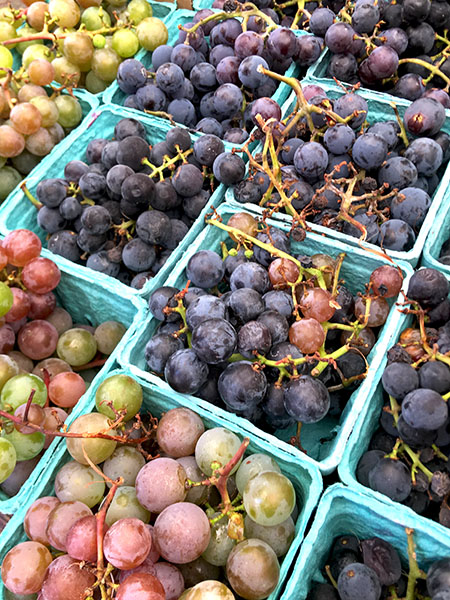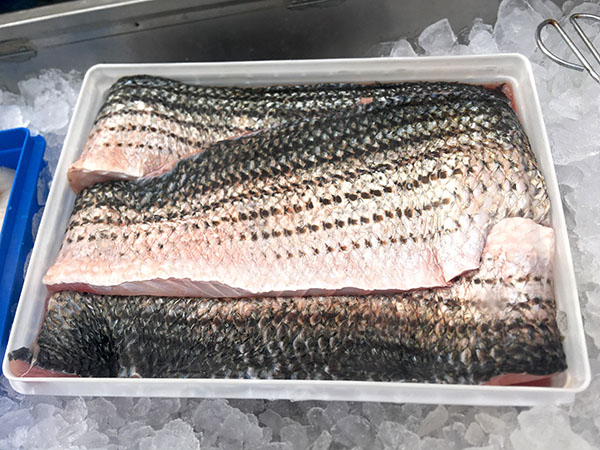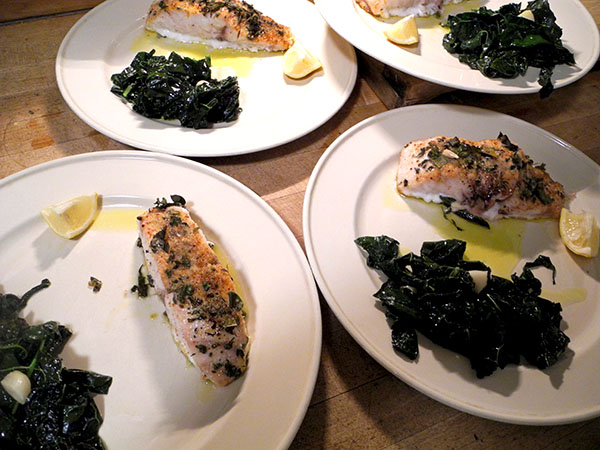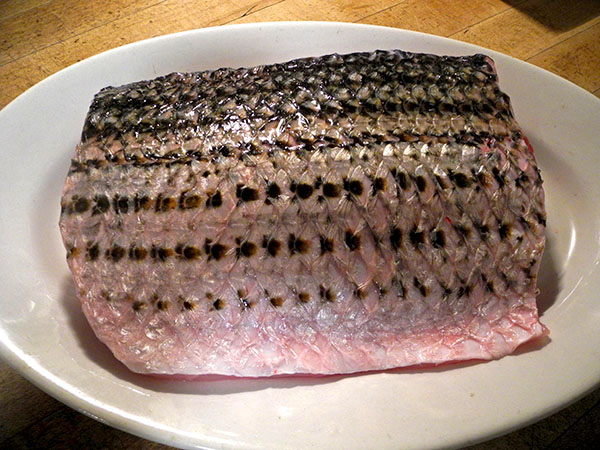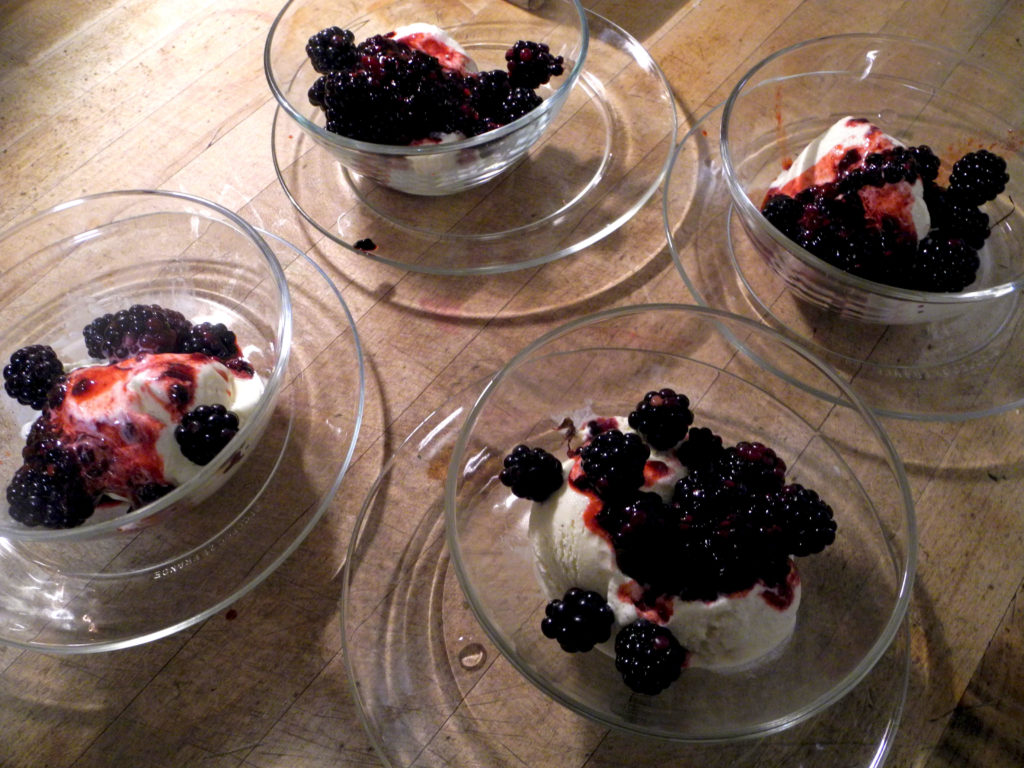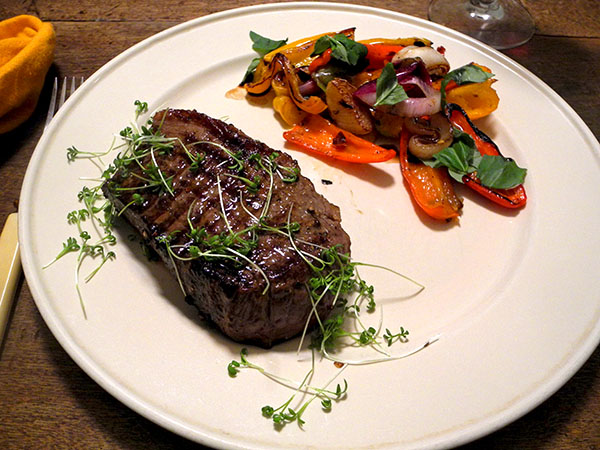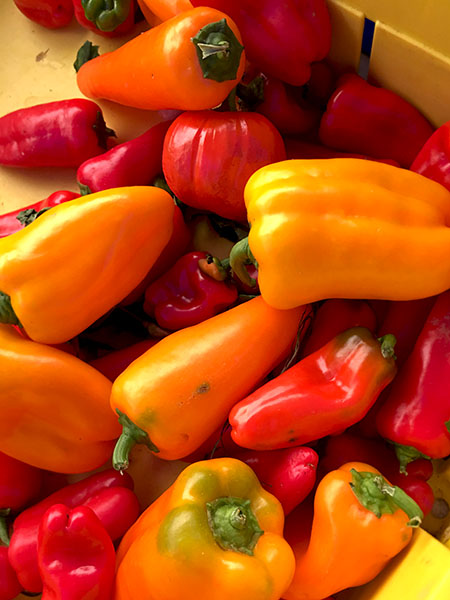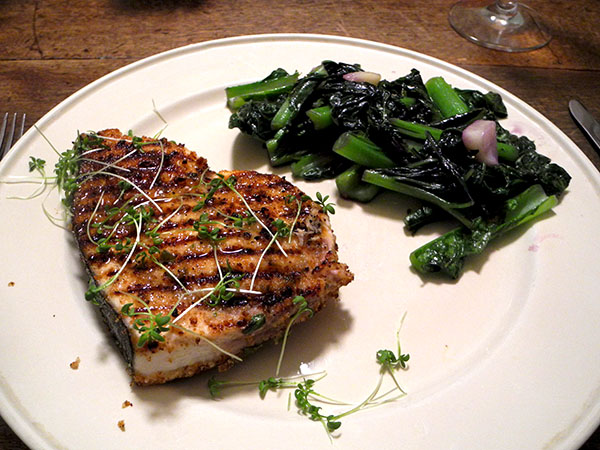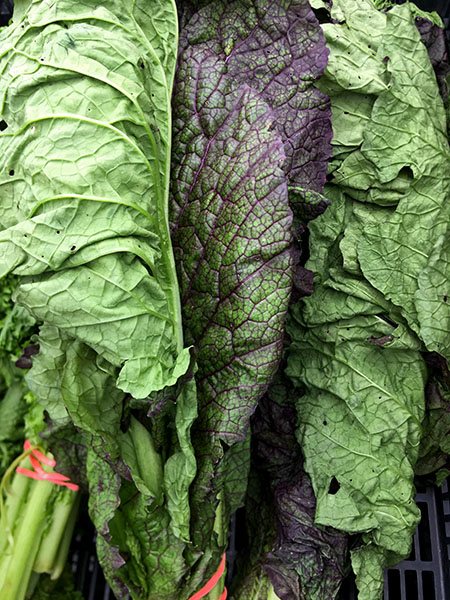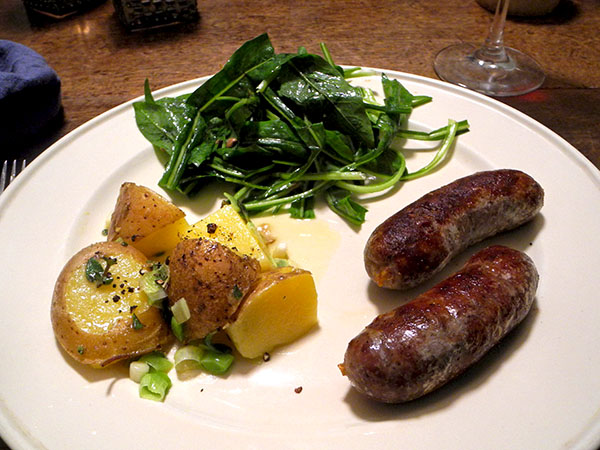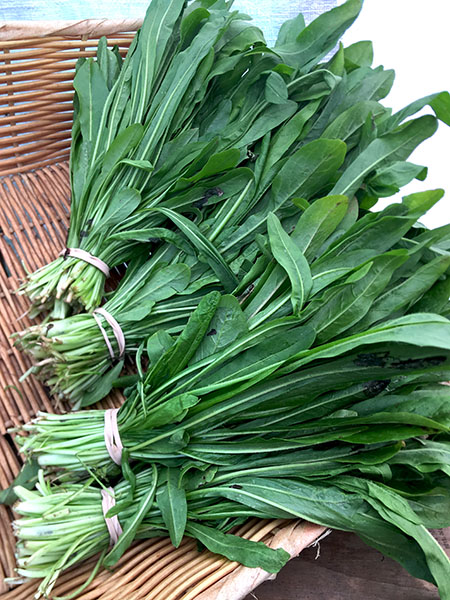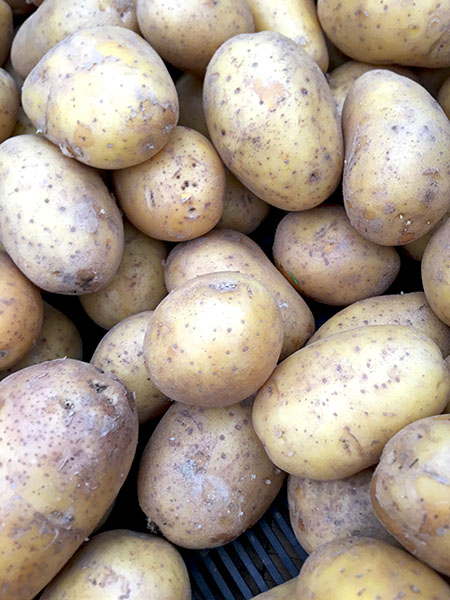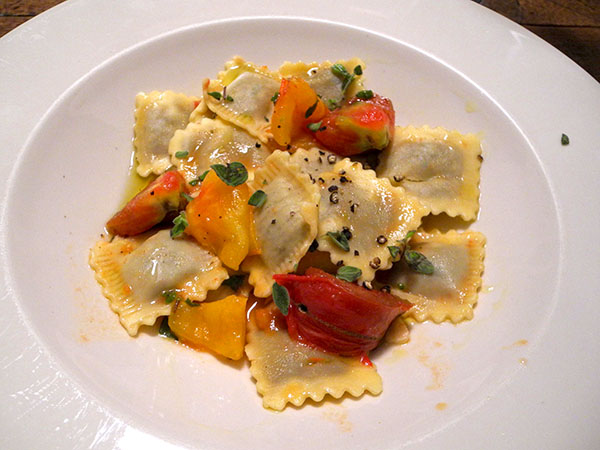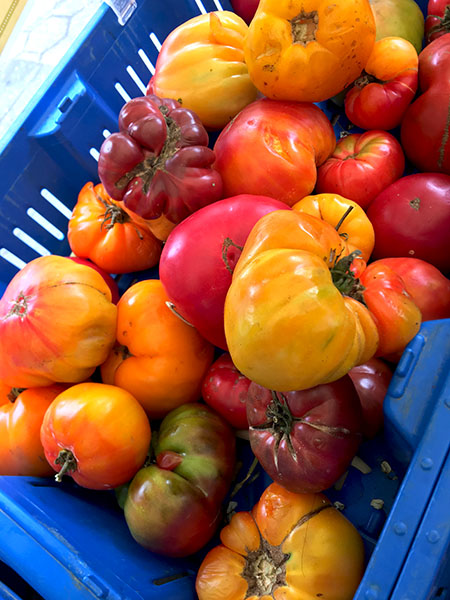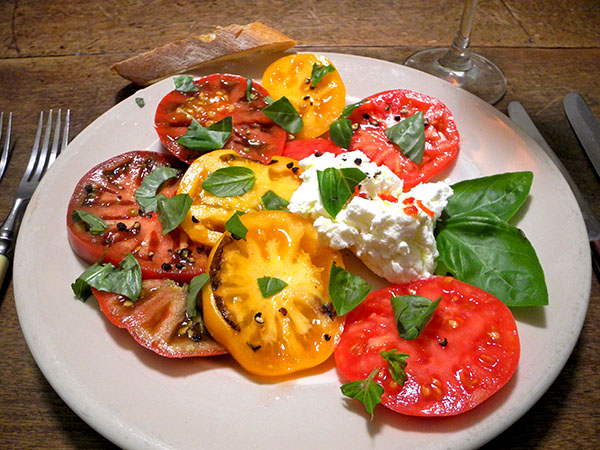
It was almost an insalata caprese, but instead of a mozzarella, the cheese was a local fresh chevre (from a small producer I’ve enjoyed supporting since their fantastic goat milk cheeses first arrived at the Union Square Greenmarket around 10 years ago).
And it was almost a pork chop, except the meat wasn’t pork but local veal (a ‘by-product’, so to speak, of a farm which produces some of our other favorite local cheeses, since only the girl cows produce milk).
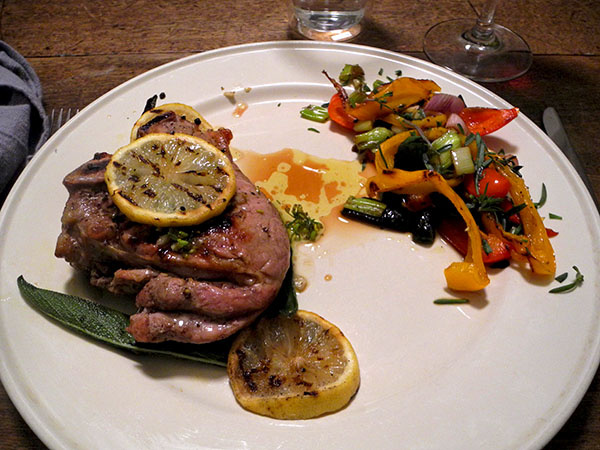
The tomatoes were selected from Franca Tantillo’s beautiful multi-table spread inside her Berried Treasures stall at the Union Square Greenmarket,
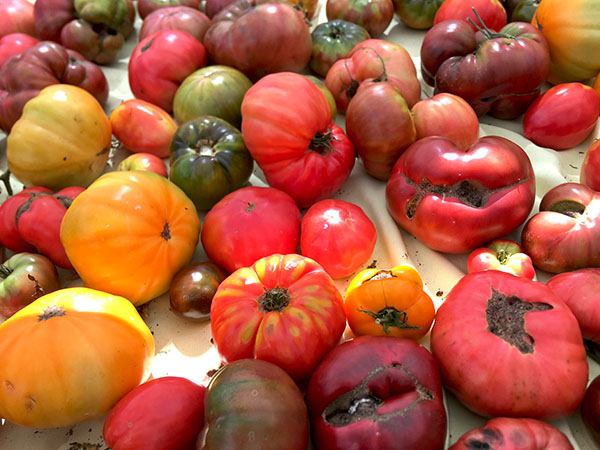
and The basil, roots still attached, came from Stokes Farm.

The first course was simple, very simple, but the ingredients made it sublime.
- a terrific chevre from Ardith Mae Farmstead, founded by Todd and Shereen Wilcox, arranged on a plate with sliced heirloom tomatoes from Berried Treasures Farm at the Union Square Greenmarket, seasoned with sea salt and freshly-ground black pepper, torn basil, off of a live plant from Stokes Farm, scattered on top, and drizzled with a good Puglian olive oil, Alce Nero DOP ‘Terra di Bari Bitonto’, from Eataly
- slices of a Balthazar Bakery baguette, from Whole Foods Market
- the wine was an Italian (Veneto) sparkling rosé, Bisol Jeio Prosecco Brut Rose
In the main course, the spotlight was shared by veal chops and sweet peppers (there was a red pepper and a dark green poblano as well as an orange, which is the only one shown here),
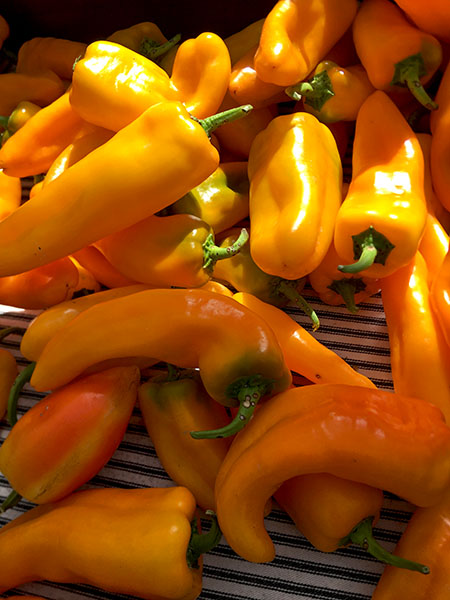
and with the peppers there was a bit of Japanese scallion.
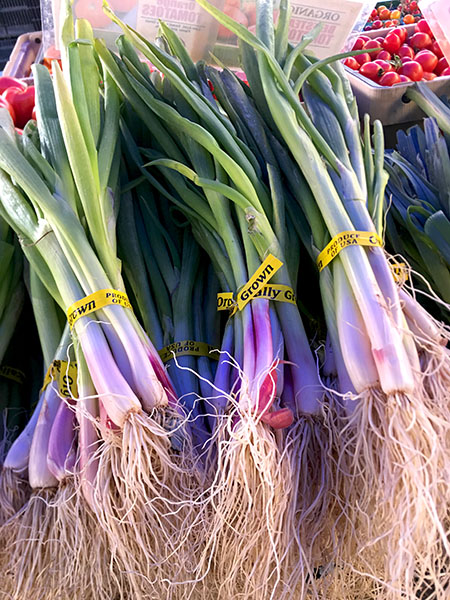
- a tablespoon of olive olive drizzled onto a small oval platter, joined by some whole sage (5 or 6 large leaves) from Phillips Farm, some very pungent fennel buds from Berried Treasures Farm, and one chopped Rocambole garlic clove from Keith’s Farm, the platter then set aside while 2 small but pretty thick veal rib chops (8+ ounces each) from Tony at Consider Bardwell Farm, seasoned with sea salt and freshly-ground Tellicherry pepper and drizzled generously with olive oil, were placed on an enameled cast iron grill pan that had been pre-heated over a moderately high flame, cooked, turning once, about 6 minutes per side for medium doneness (with a tent of aluminum foil for much of the time, because of their thickness, to help the process along), transferred to the platter holding the garlic, oil, and herbs, turned to coat, and more olive oil added to the chops, allowed to rest for about 3 minutes, again tented with foil to keep them warm, while several thick slices of an organic lemon from Whole Foods Market, brushed with olive oil, were added to the grill pan, cooked until warm and beginning to char, turning once, the veal chops arranged on two plates, along with much of the garlic/sage/fennel oil, the lemon slices placed on top
- a few super-sweet, red and orange, ‘Cornito” peppers and one dark green poblano, all from Alewife Farm, cut, after the seeds and membranes were removed, into bite-size pieces, sautéed over a high flame until slightly caramelized, one sliced Japanese scallion and a pinch of crushed dark dried habanada pepper added near the end, the mix tossed with sea salt, freshly-ground black pepper and some chopped summer savory from Ryder Farm, and served with a drizzle of olive oil
- the wine was a California (Amador) red, Ana Diogo-Draper Amador Touriga/Tempranillo 2015, from Naked Wines
- the music throughout the meal was the album, ‘Gloria Dresdensis‘, music of 18th-century composers associated with Dresden for at least part of their creative lives (Giuseppi Antonio Brescianello, Johann Georg Pisendel, Johann Adolph Hasse, Johann Friedrich Fasch, Antonio Caldara, Giovanni Battista Sammartini, and Georg Friedrich Händel), performed by the Dresdner Barockorchester
